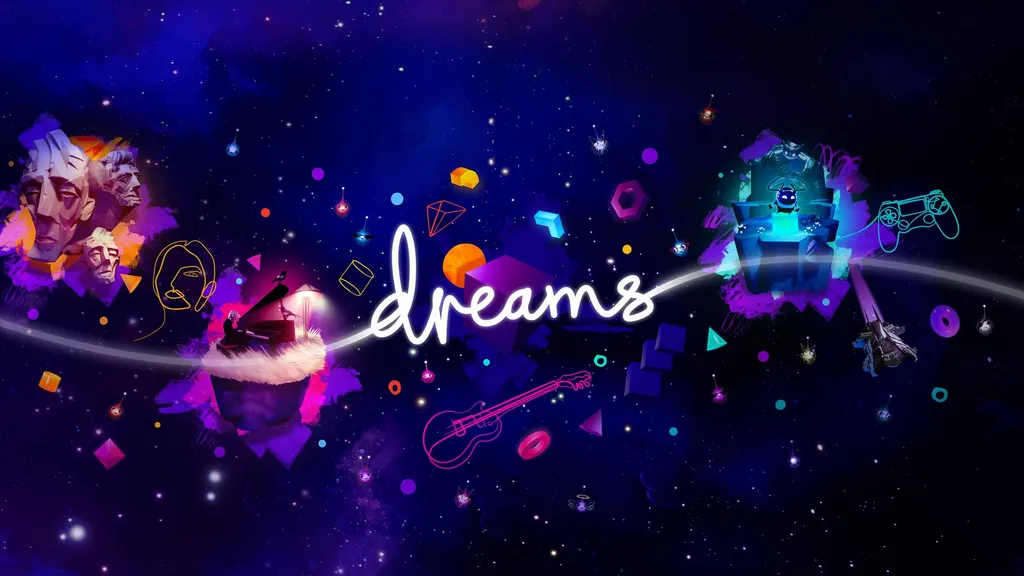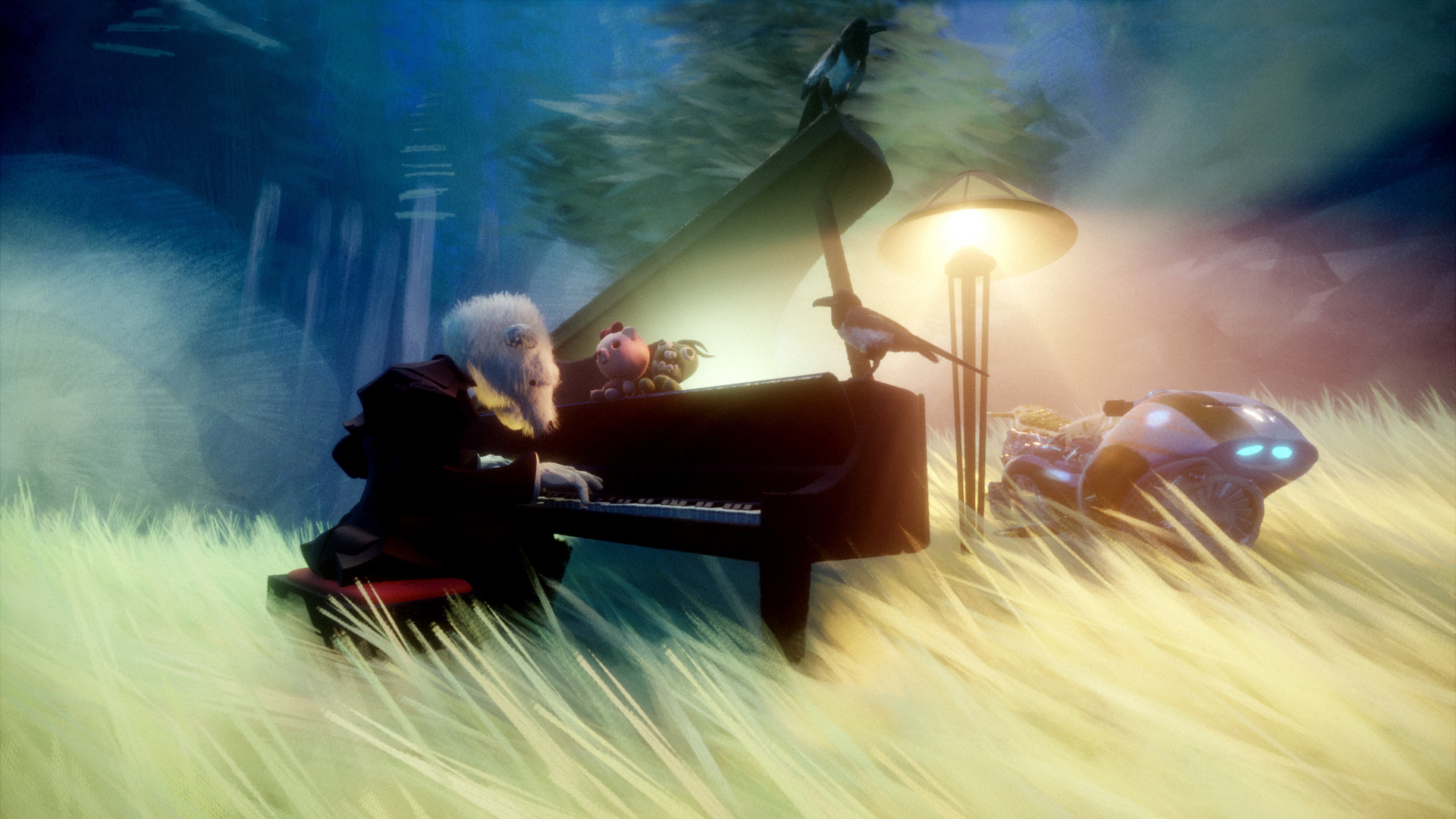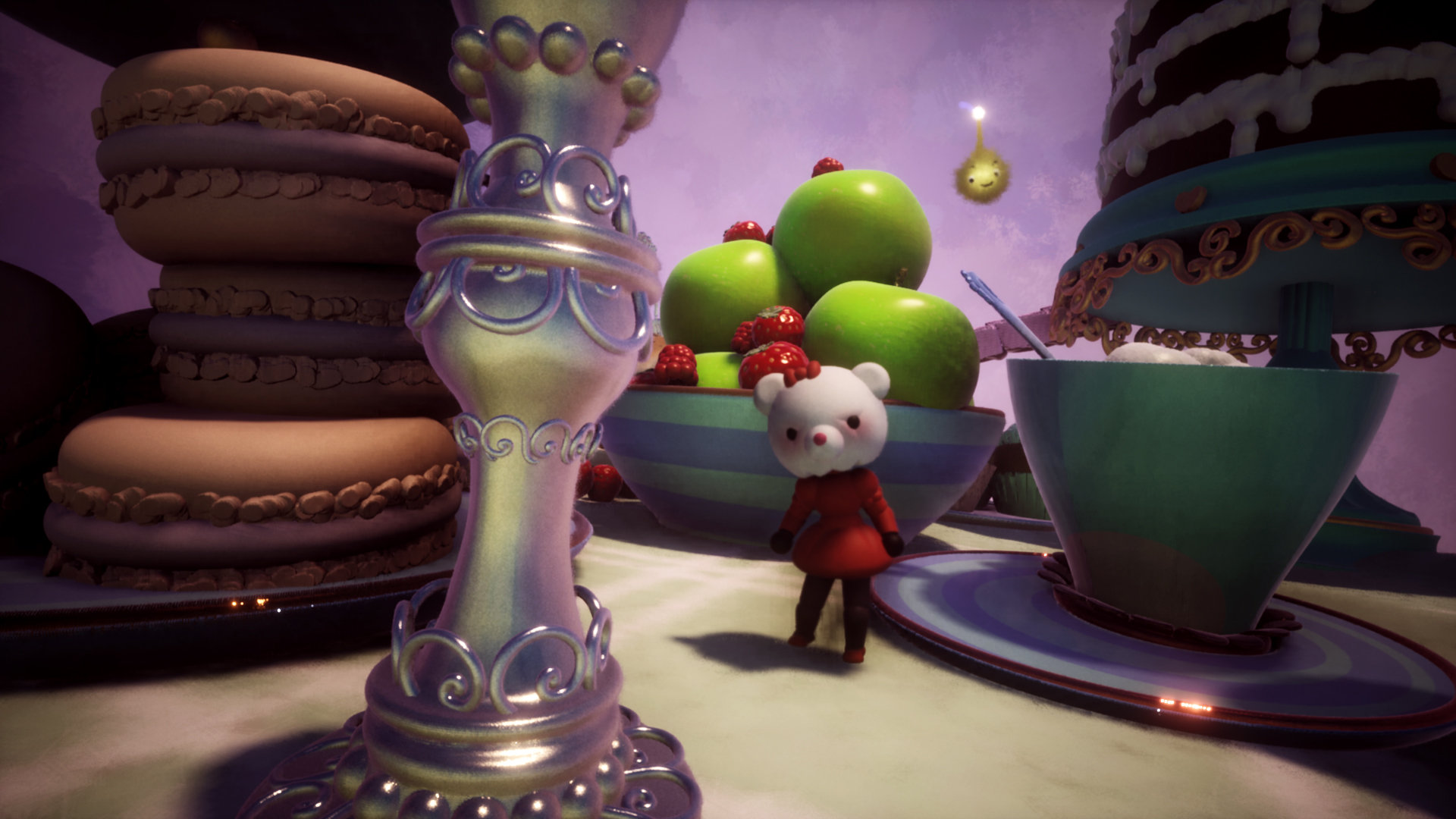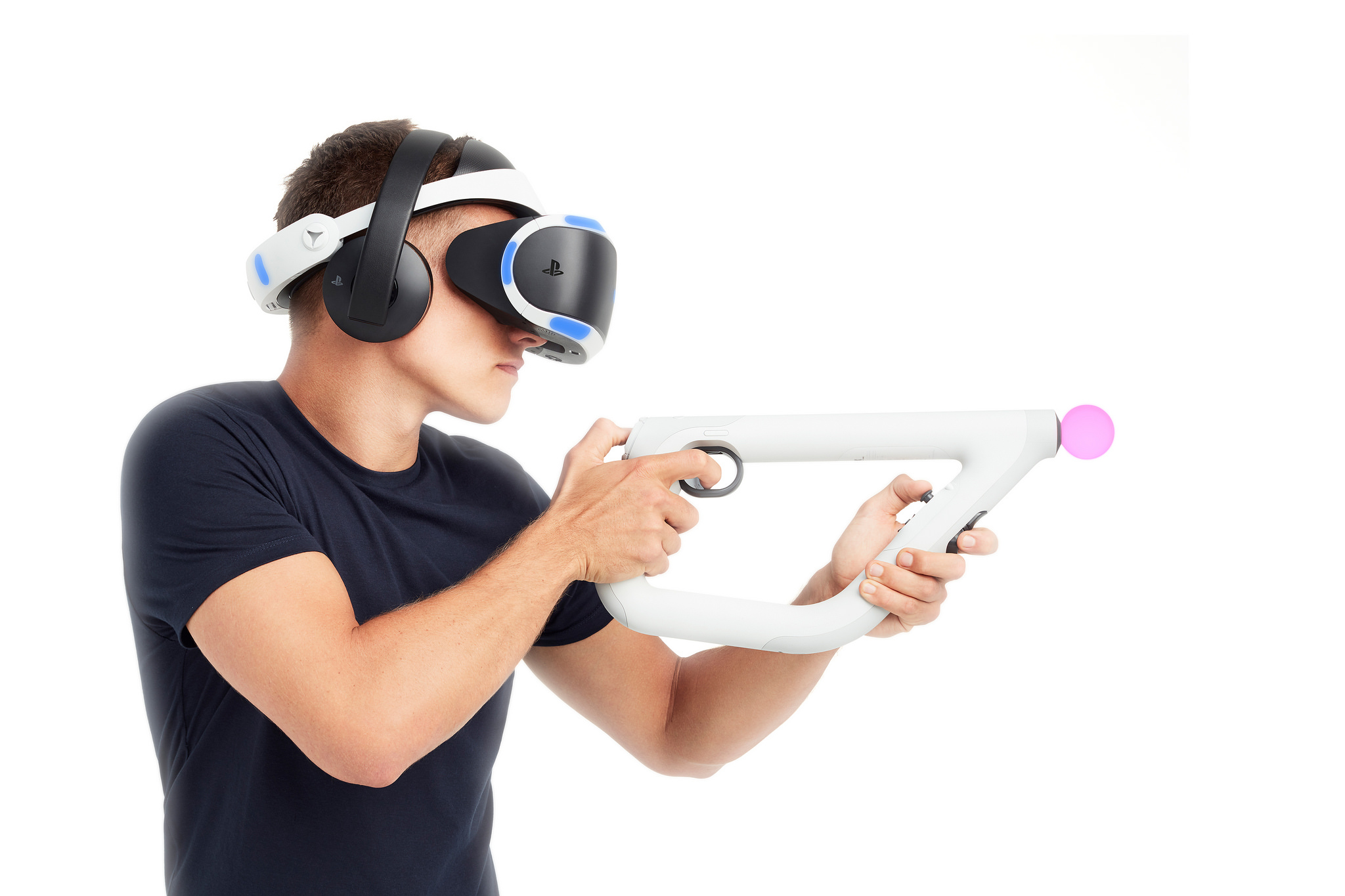Dreams PSVR support finally becomes a reality this week with a free update to the PS4 title on July 22nd. But there’s still a lot we don’t know about the promising integration.
Creative Director Mark Healey helped clue us in a little.
We spoke to Healey last week to learn as much as possible about the ins and outs of Dreams PSVR integration. We’ve been following the hugely ambitious creation platform since its early days, even diving into the beta to find out what makes the flatscreen version tick.
Based on our talk with Healey, though, we’re more curious than ever to start tinkering this Wednesday. Here’s 11 things we learned from our chat.
You Can Play ALL Of Dreams’ Existing Content With It (UPDATED)
Update 07/21/2020: Following the original publishing of this story yesterday, Media Molecule further clarified to Upload VR that existing content in Dreams will automatically be marked as ‘Non-VR’ when the update goes live. This means that players cannot access the content inside VR. However, authors can go in and enable VR support themselves. If they first access the content inside PSVR itself, they can label the content as ‘VR Compatible’ or ‘VR Only’. If they don’t have access to a VR headset, they can mark it as ‘Not Sure’, which lets VR players access the content if they opt into seeing ‘Not Sure’ experiences in their filters. These experiences will come with a warning too. You can read more about these labels and clarification here. Another interview this week also clarifies that the game’s single-player campaign, Art Dreams, is not playable in VR. Original story is below.
Now this is really surprising. When Dreams VR support launches on Wednesday, every game and experience made for the platform so far can be played or viewed inside the headset. “It’s really important that it is the full thing, it’s not just ‘Oh, we’ve added VR and it just means you can look at sculptures in VR’, it’s the full shebang,” Healey says.
That means if you’ve been building a game and thinking it would look great in VR, you can take a look the second the update downloads. There’s no starting from scratch with a VR box checked or comfort/performance settings to pass; it’ll just work.
As exciting as that sounds, Healey also acknowledges how hectic it could get. “Whether that actually ends up being good or not is going to be a bit random because people didn’t necessarily make that to be VR,” he said, later pointing to a recent play session where he’d jumped into a first-person shooter only to discover the scale was entirely off.
“It’s just hilarious because I was walking down the road with this hand and this gun that was the size of a house,” he says. “It was ridiculous but it was kind of cool that I’d found that, you know?”
But Authors Can Turn VR Off Or Make It Exclusive
That said, if you’re creating something with a specific vision in mind, there’s a good chance VR doesn’t fit into that. For that eventuality, Healey says Media Molecule will give players the option to turn off VR support. On the flip side, you can make your content VR-exclusive, too.
“And then we’ve given authors of any content the ability to say ‘Actually this is VR only, or this is not for VR or this actually works in both VR and non-VR,'” he reasons. “But it’s fun that the default is everything just works.”
There Are Smart (And Optional) Comfort Settings
Of course, with all this unwieldy potential, it would be a little irresponsible not to provide some comfort tweaks. Those are all there and turned on by default, but the team has also come up with some smart solutions for existing content.
“Let’s say someone’s made a simple thing where you’ve got a character walking around the landscape,” Healey explains. “The default setup for that in Dreams is that the camera will follow the character and you can rotate around. If you have the comfort settings on, that changes. That same piece of content, you can still play it but now the camera’s fixed — obviously you can look around — the character walks a certain distance and then the camera will just teleport, essentially.”
Even with these options, we’d wager a large amount of existing content will be strange to experience in VR, but these are smart inclusions all the same.
There Are No Extra Limits To How Much You Can Build
Another surprising fact; Creator Mode with Dreams PSVR support won’t impose any additional limits. You’ll be able to create the exact same content as you could on PS4 without the worry of hitting any early memory limits. One reason for this? Some players will want to use VR to make non-VR games.
“I think it’s very valid to use VR to make a non-VR experience, actually,” Healey says. “Because of the extra intuitiveness, you get from sculpting and the 3D space.”
But There are Contingencies For When Things Get Too Much
Inevitably, though, some of the content that you can play in Dreams just won’t run well in PSVR. For those moments, Media Molecule has an intriguing (and, again, optional) solution: boot you out to PSVR’s Cinema Mode.
“We automatically kick you out into the sort of virtual cinema mode that’s on the PlayStation,” Healey says, “But you can, in the menus, opt out of that if you like. So you can be ‘I don’t care, just give it to me, even if it’s a low framerate’.”
The platform can also dynamically change the resolution to help cope with demand but, again, we’d imagine some of Dreams’ most ambitious existing games will have your PS4 shuddering.
There’s New Gadgets For Putting Things On Your Head And Hands
What’s the first thing you ever did in VR? I bet for a good chunk of you, it’s put a hat on your head. Maybe you were in Cole Phelps’ office in LA Noire, or grabbed a hard hat in Half-Life: Alyx. There’s just something satisfying about it, an affirmation that the technology works. Healey explains that there’s a new Head Tracker gadget specifically for that.
“So if you want to put some big horns on there or an elephant trunk or whatever, that becomes really easy,” Healey says. “And that also benefits the non-VR side of things too, because that just means in non-VR it sticks to the player camera.”
There’s a similar tool for your hands, too, making it easy to customize a pair of virtual hands for first-person experiences, or stick items like weapons into them.
Media Molecule Made Some New Content Too
This week’s update won’t just drop its new tools without warning, though. Media Molecule will also help ease you into VR with ‘Inside The Box’, a virtual gallery of exhibits and games to tease the potential of VR support. “It’s basically a big kind of brutalist architecture gallery space that you can go into,” Healey says. “We’ve got a bunch of sort of interactive sculptures and exhibits if you like, and there’s actually three games we’ve made in there too. There’s like a puzzle game and a shooty game and a platformer game. And each of those games also comes with a Modular Kit so you can easily make extra levels for that type of game.
You Could Make Makeshift Local Multiplayer Games
Dreams PSVR support won’t include Sony’s social screen integration, which gives people outside of VR a separate view on the TV to control a different character with. Healey says that feature could come if there was demand for it, but you could also just hand over a controller to someone else while you’re in VR to play as another character. Co-op Astro Bot, anyone?
Name Your Lightsabers ‘Energy Prodders’
Having been available since February (and in Early Access long before then), Dreams is no stranger to the battle against letting people make what they want and companies wanting to protect their own IP. Healey and co have always strived to encourage and promote original content on the platform, though Healey does liken making themed content to learning guitar covers to help get better. Obviously there’s things everyone wants to do in VR like, wield a lightsaber or swing from a building as Spider-Man. You’ll still be able to do that here, you’ll just need to be careful with how you frame it all.
“Whether the VR thing is going to introduce more of that or not, I don’t know,” Healey says. “But as you say, a lightsaber is probably one of the things that everyone is going to want to make I imagine. They’re just going to have to call it something else, like a light stick or something, or an energy prodder.”
It Might Get Aim Controller Support, If There’s Demand For It
Dreams might not be a first-person shooter itself, but you can bet people are going to start making great VR shooters right off the bat. But what about support for Sony’s rifle-shaped Aim controller, then? The device, best seen in Farpoint and Firewall: Zero Hour, can do wonders for VR immersion and would make for another brilliant tool to the Dreams arsenal.
“I mean something that’s come up a few times is people asking about Aim support, the specific peripheral that was made,” Healey says. “If there was big demand for that I don’t see any reason why we couldn’t add that.”
You heard him – get asking if you want to see Aim in Dreams PSVR (apologies in advance to Media Molecule for any spam).
It’s Going To Open Some Floodgates (Again)
If you’ve been following our coverage of Dreams here at Upload, you’ll know we think it’s potentially a very significant release. User-created VR content is one of the most promising areas of this new industry, currently led by amazing art apps like Tilt Brush and Quill. Dreams represents a chance to raise that bar, offering a robust, accessible toolset on a platform much more welcoming to most consumers and then giving them the chance to go a step further and turn their content into games.
I ask Healey if the team has considered what a milestone for VR that could be. He says he hadn’t quite thought about it that much, but agrees the potential is there.
“It’s like sort of crowd-sourcing what VR experiences can be, in my mind,” he says. “Putting it in the hands of the PlayStation community, giving them the opportunity just to express whatever crazy ideas come into their mind without the baggage or having to please a publisher or worry about whether it’s going to make money or bla bla bla.
“I think it could be really liberating and potentially be really exciting. It could open up almost some new sort of genres or ways of thinking about what VR can be.”
Dreams PSVR support lands on July 22nd as a free update for existing owners.






























